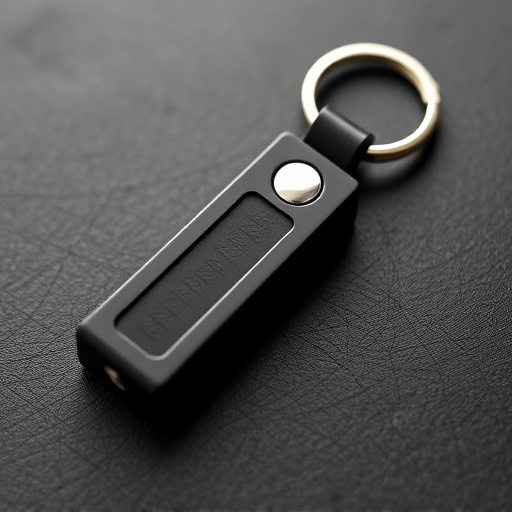The Proper Keychain Striking Form Technique is a critical design and manufacturing standard for keychain safety devices, governed by legal requirements worldwide. This technique dictates material selection, edge treatment, and construction methods to ensure device functionality, consumer safety, and compliance with regional regulations. Manufacturers must adopt these standards to prevent accidental activation, injuries, and hazardous impacts, thereby fostering consumer confidence in the industry's commitment to safety.
In today’s world, ensuring the safety of everyday items like keychains is paramount. This article delves into the legal landscape surrounding keychain safety devices, offering a comprehensive guide for manufacturers, distributors, and consumers. We explore critical aspects such as defining the optimal keychain striking form technique, understanding relevant legal requirements for distribution and sales, and adopting best practices to safeguard consumers. Additionally, we present case studies highlighting successful compliance and innovation, emphasizing the importance of adhering to proper keychain striking form techniques.
- Understanding Keychain Safety Devices: A Legal Perspective
- Defining Proper Keychain Striking Form Technique
- Uncovering Legal Requirements for Distribution and Sales
- Ensuring Consumer Protection: Industry Best Practices
- Case Studies: Success Stories of Compliance and Innovation
Understanding Keychain Safety Devices: A Legal Perspective
Keychain safety devices, designed to prevent accidental deployment and ensure proper usage, are more than just convenient accessories; they are subject to legal considerations. Understanding the legal requirements surrounding these devices is crucial for manufacturers, distributors, and consumers alike. The primary focus lies in adopting the proper keychain striking form technique, which not only guarantees the device’s functionality but also complies with safety standards.
Legal frameworks often mandate specific design elements and testing procedures to ascertain that keychain safety devices operate within safe parameters. Adhering to these guidelines ensures that products are safe for everyday use, mitigating potential risks associated with incorrect handling or accidental activation. Therefore, manufacturers must stay informed about regional regulations and incorporate the proper striking form into their device designs to meet legal obligations and protect end-users.
Defining Proper Keychain Striking Form Technique
In the realm of keychain safety devices, understanding the concept of the “Proper Keychain Striking Form Technique” is paramount. This technique refers to the ideal way of designing and constructing keychains to ensure they serve their purpose effectively while adhering to legal standards. It involves a careful balance between functionality, material choice, and manufacturing processes to create a durable and safe accessory.
The definition encompasses considerations such as using robust materials that can withstand daily wear and tear, implementing secure fastening mechanisms, and ensuring the keychain’s design doesn’t present any sharp edges or hazardous protrusions. Additionally, compliance with legal requirements for product safety is essential. This includes meeting standards related to material toxicity, edge sharpness, and overall construct, which vary across jurisdictions but are designed to protect consumers from potential harm.
Uncovering Legal Requirements for Distribution and Sales
When it comes to distributing and selling keychain safety devices, understanding legal requirements is paramount. Each jurisdiction has its own set of regulations that dictate what constitutes a safe product and how it should be marketed. For instance, in many regions, manufacturers and sellers must adhere to specific guidelines regarding material composition, size, and the overall construction of keychains to ensure they do not pose any harm or risks to consumers.
The “proper keychain striking form technique” is one such crucial aspect. This refers to the design and manufacturing process that ensures the keychain’s safety. It involves using materials that are non-toxic and free from sharp edges, as well as incorporating features like rounded corners and smooth surfaces to prevent any injuries during accidental impacts or breaks. Compliance with these legal requirements not only safeguards consumers but also assures them of the product’s reliability and quality.
Ensuring Consumer Protection: Industry Best Practices
To ensure consumer protection, manufacturers and retailers of keychain safety devices must adhere to industry best practices. This includes adopting a proper keychain striking form technique that minimizes the risk of injury during use. By utilizing this method, consumers can confidently trust that the device will function as intended in an emergency situation.
Moreover, regular testing and quality control measures are essential to guarantee product reliability. Using standardized protocols for evaluating impact resistance, durability, and functionality ensures that every keychain safety device meets or exceeds legal requirements. Embracing these best practices fosters consumer confidence and reinforces the industry’s commitment to keeping individuals safe.
Case Studies: Success Stories of Compliance and Innovation
In the realm of keychain safety, several case studies highlight successful instances of compliance with legal requirements and innovative design. For instance, a leading manufacturer implemented a striking form technique where keychains feature distinct shapes, colors, and textures to prevent accidental activation by children or pets. This simple yet effective approach has been widely adopted, ensuring that only authorized users can activate the devices, enhancing overall safety.
Another noteworthy example involves a startup that focused on proper keychain design methodologies. By studying user behavior and conducting extensive market research, they developed keychains with intuitive locking mechanisms and easy-to-understand instructions. This innovation not only met legal standards but also fostered trust among consumers, demonstrating that compliance and creativity can go hand in hand in the safety device industry.
In conclusion, navigating the legal landscape surrounding keychain safety devices requires a deep understanding of both defining proper keychain striking form techniques and adhering to relevant distribution and sales regulations. By ensuring consumer protection through industry best practices, manufacturers can foster innovation while upholding compliance. Case studies highlight successful examples of combining regulatory adherence with creative solutions, setting a benchmark for the industry moving forward. Embracing these key considerations is vital to safeguarding users and promoting responsible product development in this niche yet critical market segment.
